UK: Saunders' Bee Hawkmoth
Sesia saundersi Walker, 1856, List Specimens lepid. Insects Colln. Br. Mus. 8: 83.Type locality: Northern India.
Holarctic; western Palaearctic region. Pleistocene refuge: Monocentric -- northern section of Sindian refuge.
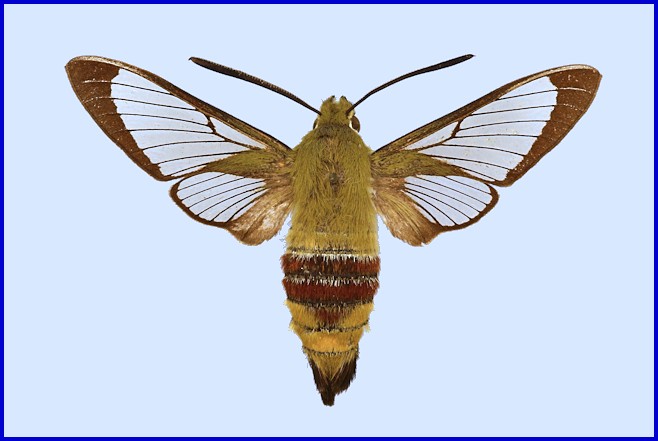
Wingspan: 50--60mm. Very like a large version of Hemaris fuciformis (Linnaeus, 1758), but without the scaled line across the forewing cell. According to Bell & Scott (1937), upperside head, thorax and abdomen olive-green; fourth and fifth abdominal segments brownish-red, with a mesal patch of the same colour on the sixth segment. Underside of abdomen brownish-red, grey mesially. Forewing upperside hyaline, with a broad reddish-brown marginal band as in Hemaris fuciformis. Hind wing hyaline, with a narrow reddish-brown marginal border as in Hemaris tityus (Linnaeus, 1758).
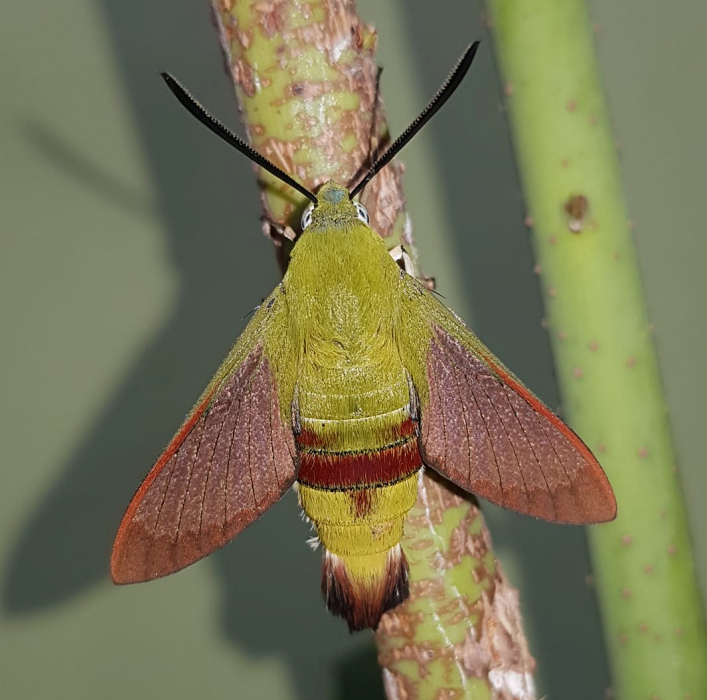
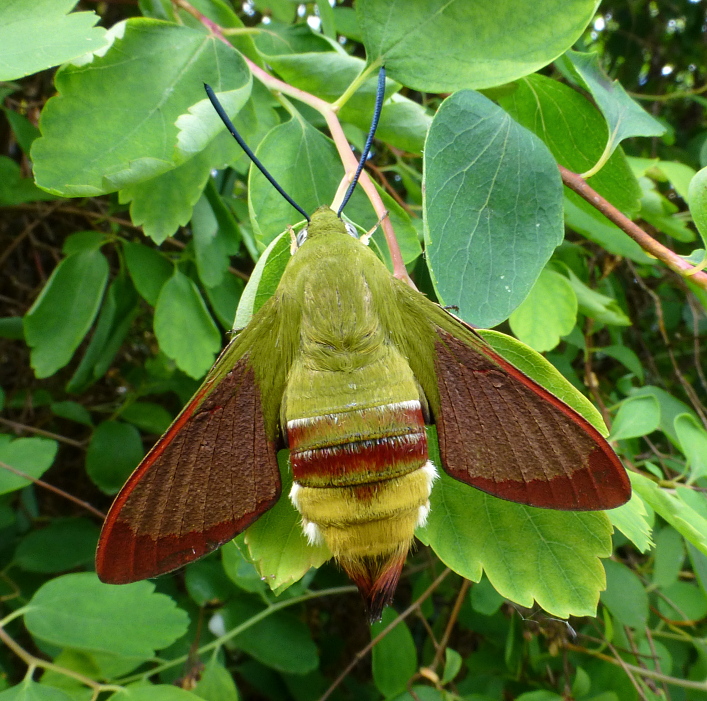
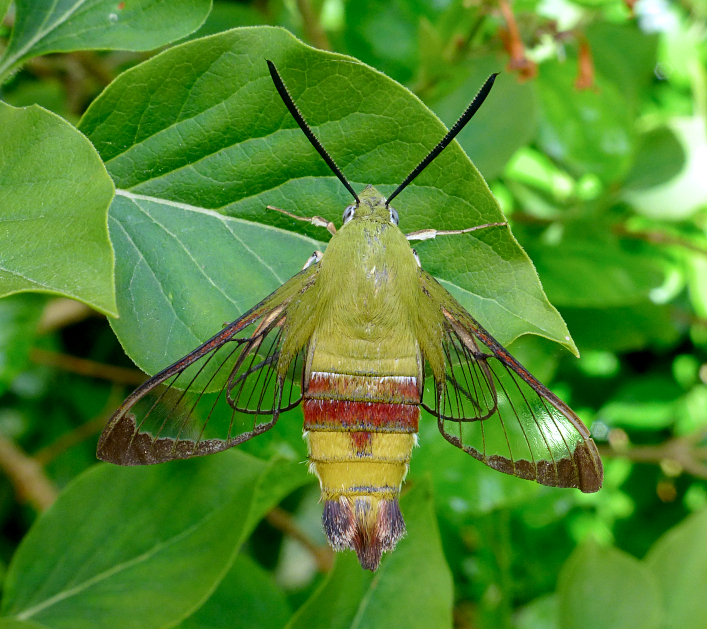
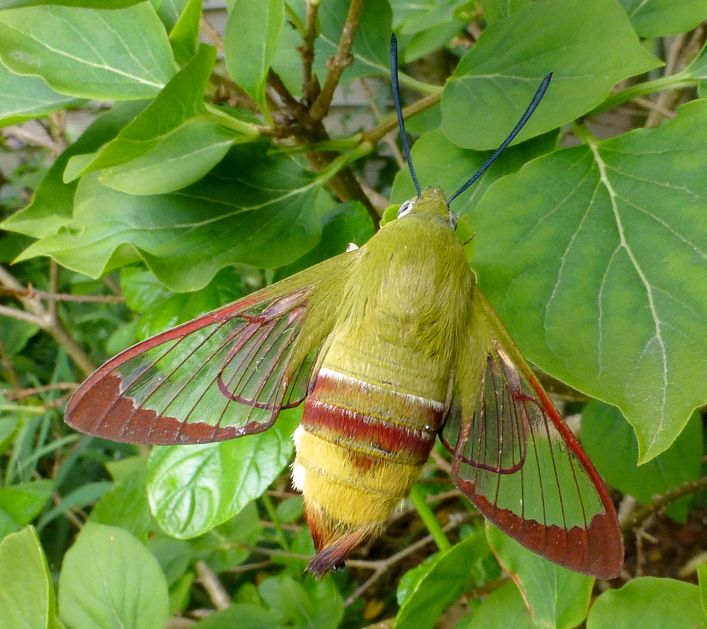
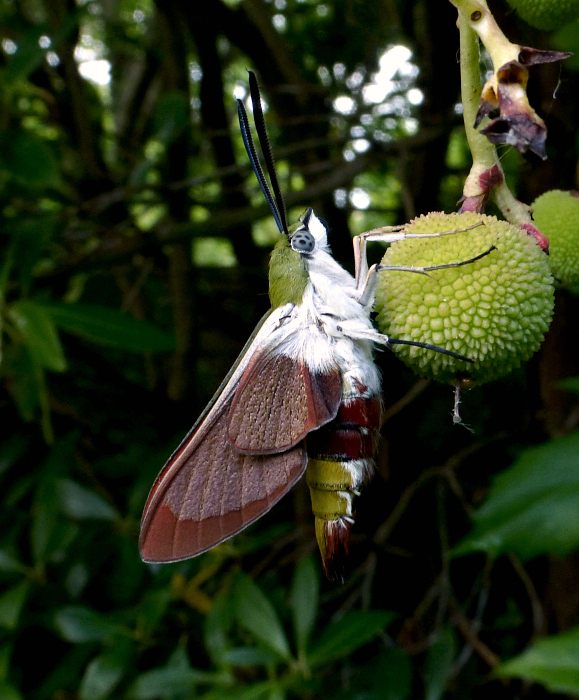
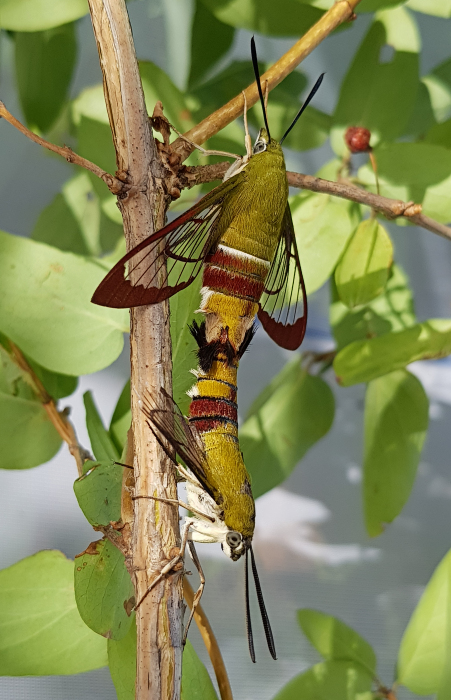
Diurnal. A species of warm temperate scrub-jungle and open forest at 1800-3000m altitude.
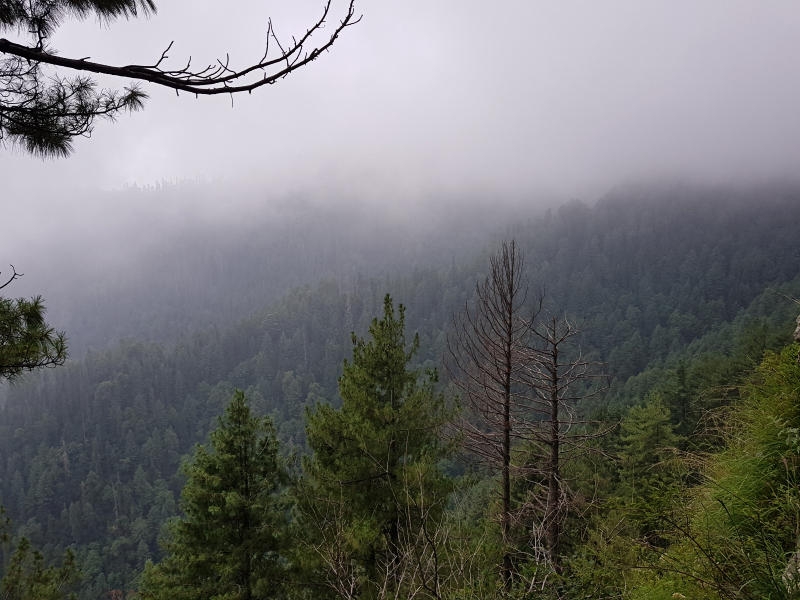

Uni- or bivoltine, depending on locality. In Kashmir, on the wing in June; in Himachal Pradesh during April/May and again in July.
OVUM: Small (1.3 x 1.1mm), but larger than those of Hemaris fuciformis, pale glossy green, nearly spherical. Laid singly on the underside of the leaves of its hostplant.
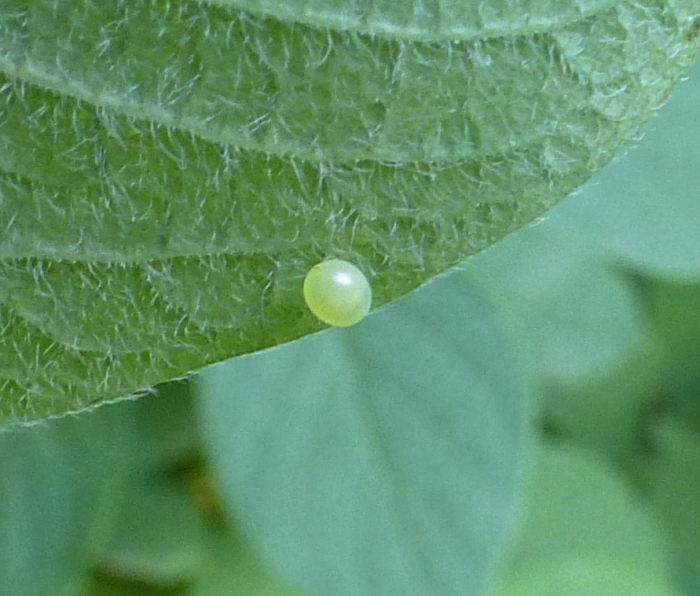
LARVA: Full-fed 45mm. Early instars undescribed. According to Bell & Scott (1937), the fully-grown larva resembles that of Hemaris fuciformis.
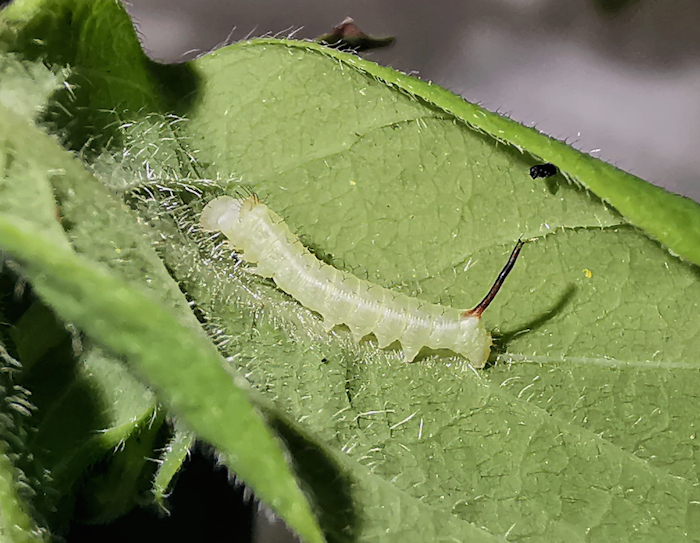
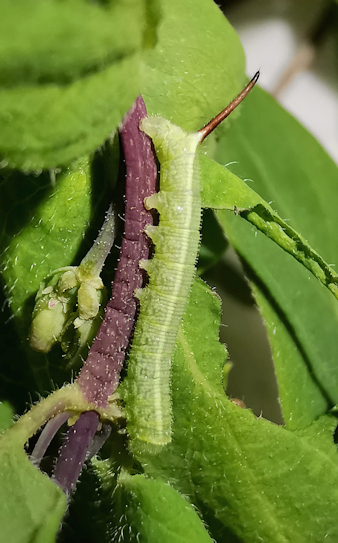
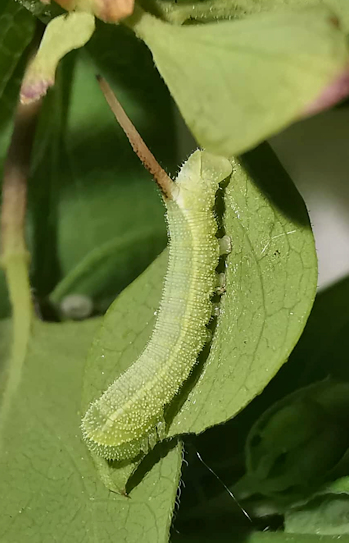
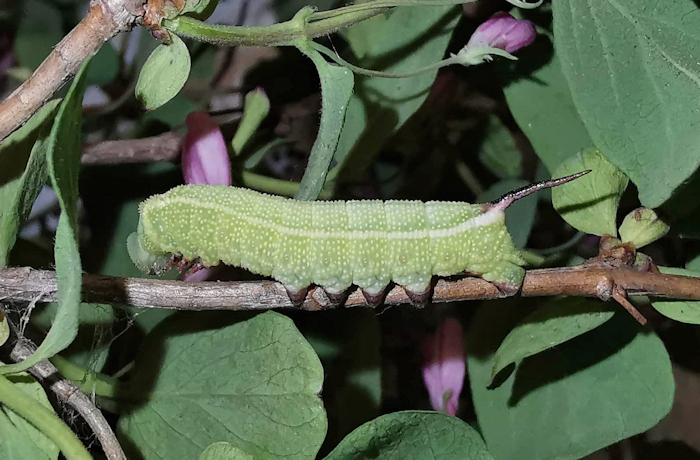
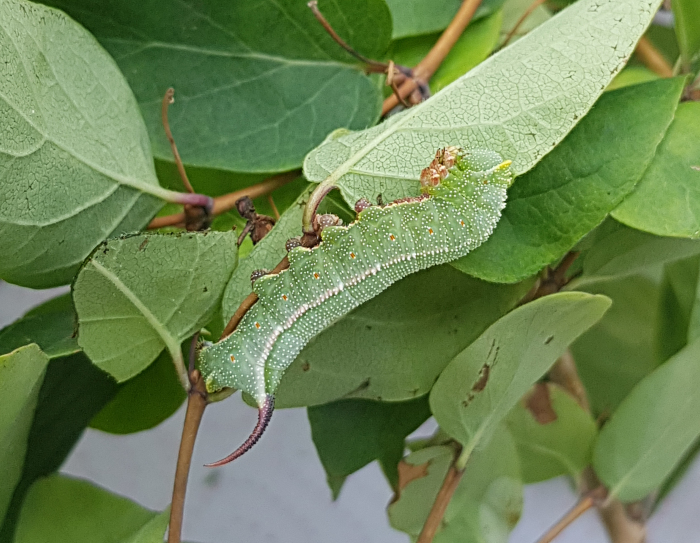
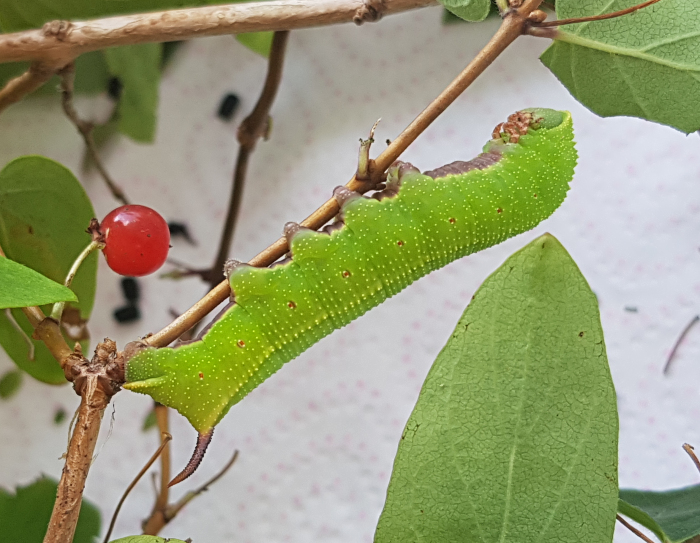
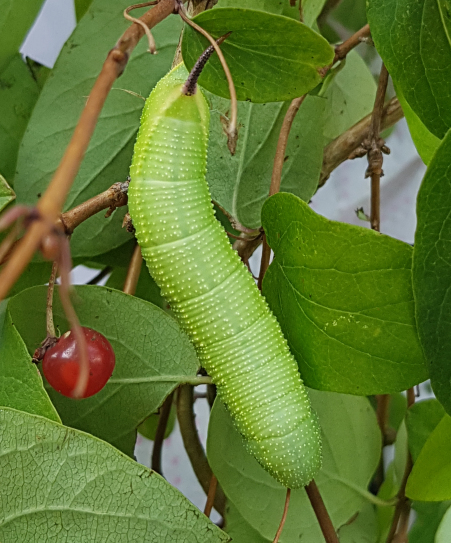
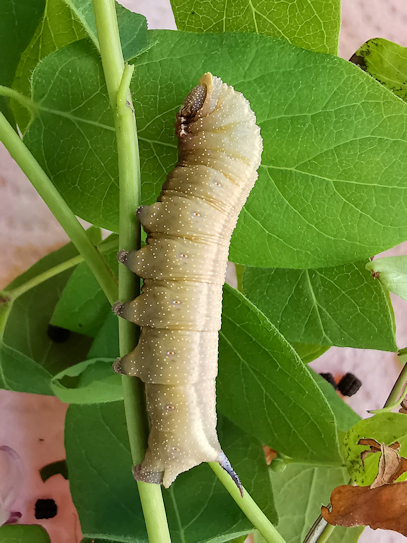
Found in May/June and again in August in scub-jungle at Mussooree (Uttarakhand); uncommen (Bell & Scott, 1937).
Hostplants. Lonicera quinquelocularis in Uttarakhand, India (Bell & Scott, 1937). However, the main host in Khyber Pakhtunkhwa, Pakistan, appears to be Zabelia triflora (R. Br. ex Wall.) Makino [syn. Abelia triflora; Linnaea triflora] (Serge Yevdoshenko, pers. comm. 2019).
PUPA: 30mm. Typical Hemaris, i.e. slender, dark brownish-black, dull shiny. Very similar to that of Hemaris croatica (Esper, 1800), but darker, and with a single pronounced lateral spine to the cremaster (not a series of smaller spines). The overwintering stage.
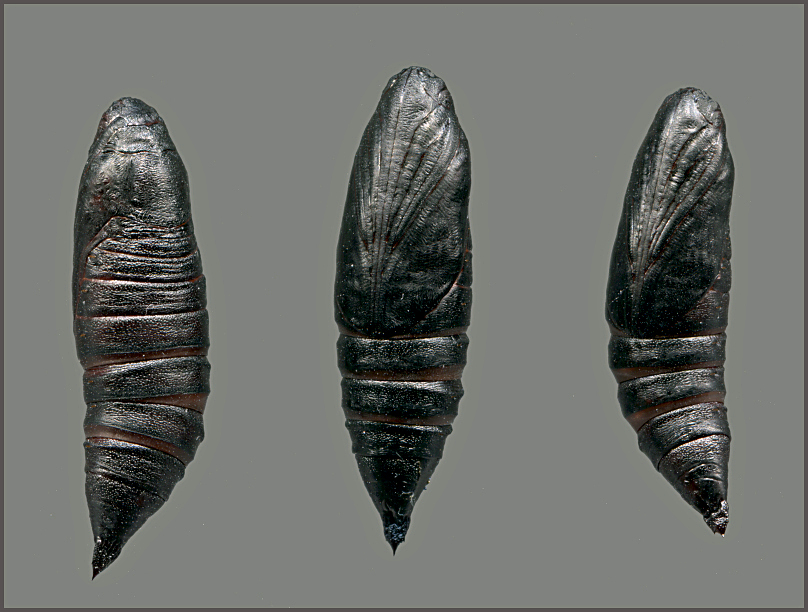
Currently known only from northeastern Afghanistan (Danner, Eitschberger & Surholt, 1998) and northern Pakistan (Khyber Pakhtunkhwa) (Rafi et al., 2014; Serge Yevdoshenko, pers. comm. 2018).
Extra-limital range. Northern India (Jammu and Kashmir (Dolzhanskiy, iNaturalist 2024), and Himachal Pradesh, east to Uttarakhand). Reports of this species from farther east are erroneous, e.g. Bangladesh and northern Myanmar.
None.
 Return to species list
Return to species list